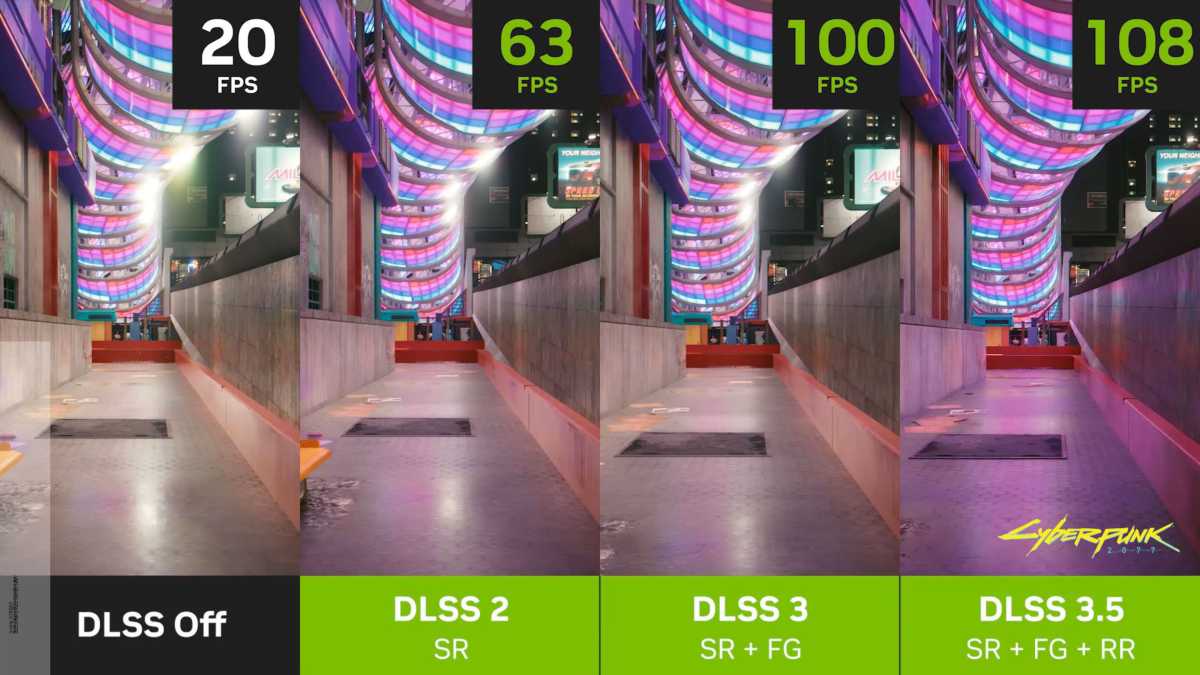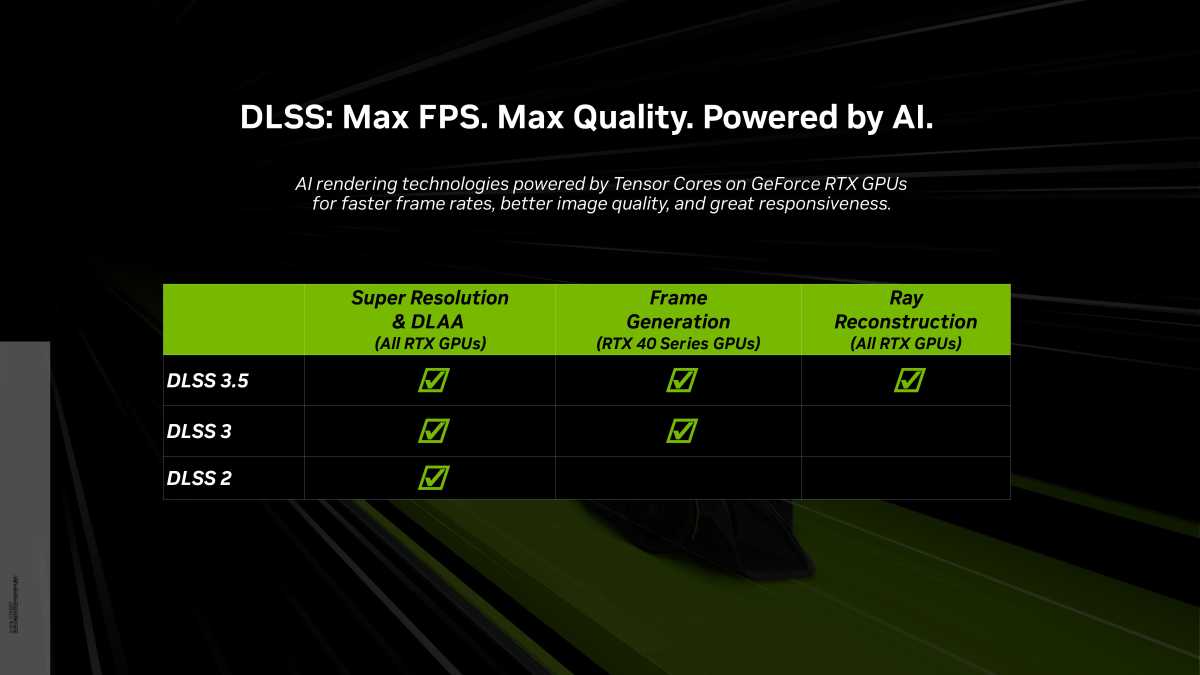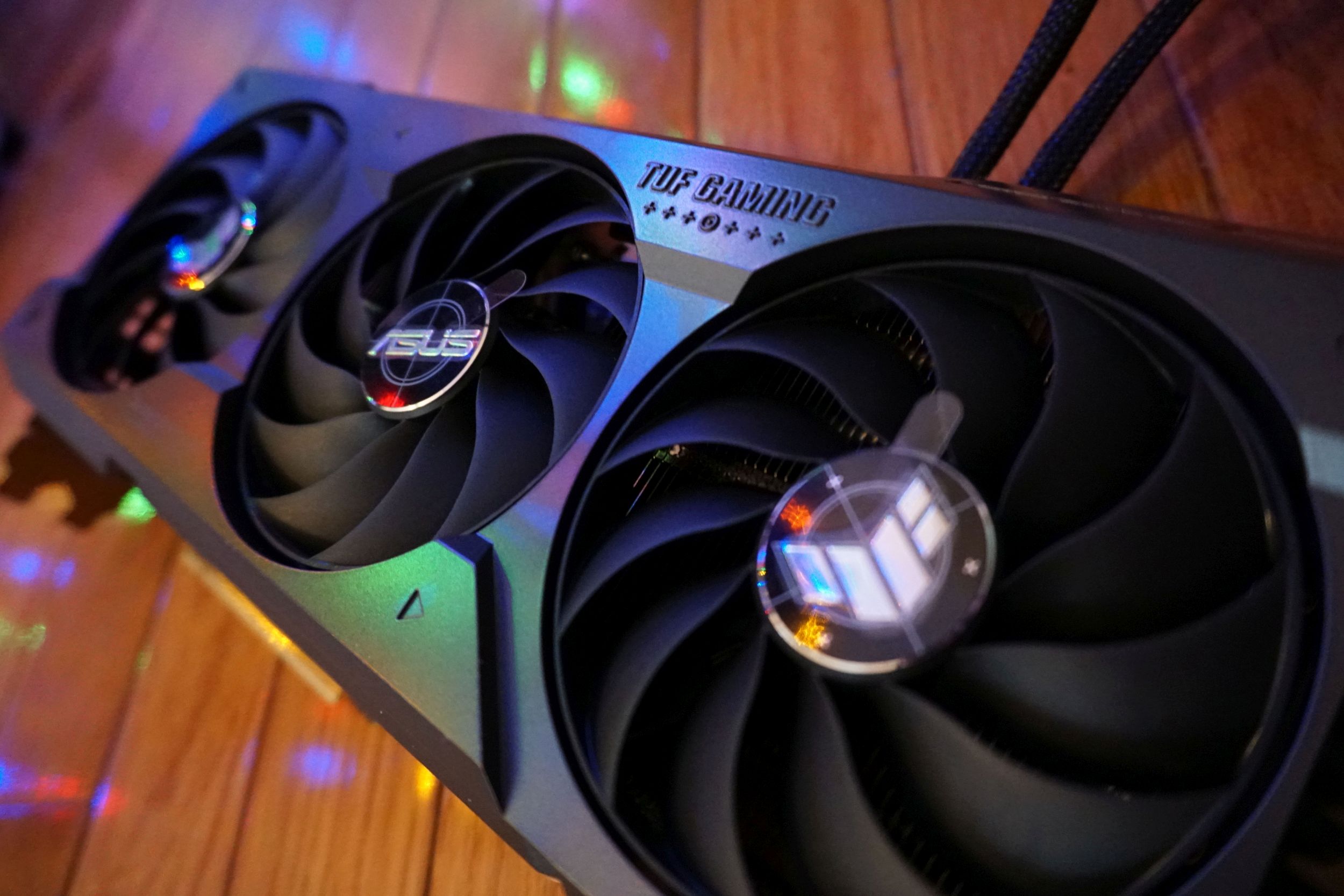Following the beloved DLSS, DLSS 2 and DLSS 3 with Frame Generation, Nvidia has now released its latest AI upscaling technology, Deep Learning Super Sampling 3.5, with an extended feature set. The noteworthy addition here is the inclusion of a new “Ray Reconstruction” feature that improves the visual quality of ray traced games, but DLSS 3.5 also interacts with Nvidia’s previous DLSS offerings to offer a big boost in visual fidelity and frame rates.
Here’s everything you need to know about DLSS 3.5.
Further reading: What is DLSS 3? How Nvidia’s AI-infused RTX tech supercharges games
DLSS 3.5 with Ray Reconstruction
With DLSS 3.5, a new “Ray Reconstruction” feature moves into the AI toolset, which improves the ray tracing image quality by replacing the previously hand-optimized denoiser with an AI network trained by supercomputers.
With the help of Ray Reconstruction, pixels with a higher quality are supposed to be created automatically between sampled rays, which has a particularly positive effect on image quality and stability (though frame rates remain relatively unchanged). Nvidia and CD Projekt Red have demonstrated how impressive this can look with Cyberpunk 2077.
According to Nvidia, in order to achieve these results, up to five times more data is now evaluated for DLSS 3.5 with Ray Reconstruction than for DLSS 3, which is why the denoiser trained by the supercomputers is so significantly superior to the manual variant. Our deep-dive into the initial DLSS 3.5 reveal explains the technology’s backbones in much more detail if you’re interested.
The DLSS 3.5 feature set
When a game is updated to support DLSS 3.5, the following features can be combined to work in tandem:
- Super Resolution
- Frame Generation
- Ray Reconstruction
- Nvidia Reflex
Current graphics cards of the GeForce RTX 40-series can claim the greatest performance leap, as they are the only GPUs that can also handle intermediate image calculation with the help of the Frame Generation feature introduced with DLSS 3.

Nvidia
DLSS 3.5 and Ray Reconstruction is, however, available to all graphics cards of the GeForce RTX series. DLSS 3.5 can thus be used by the following graphics cards:
- Nvidia GeForce RTX 20-series (“Turing”)
- Nvidia GeForce RTX 30-series (“Ampere”)
- Nvidia GeForce RTX 40-series (“Ada Lovelace”)
Nvidia’s GeForce blog has explained in detail about which technology offers which feature set and can be used with which GPU generation. The following graphic sums it up relatively simply, though.

Nvidia
The AI-supported upscaling, dubbed Super Resolution, is available to all GeForce RTX graphics cards. The same applies to DLSS 3.5’s Ray Reconstruction. Only DLSS 3’s AI Frame Generation remains reserved for the current GeForce RTX 40-series.
See DLSS 3.5 in action
Gamers who want to see DLSS 3.5 with ray reconstruction in action should play one of the current ray tracing blockbusters, such as the dystopian action role-playing game Cyberpunk 2077.
Our impression so far? The effect of the new Ray Reconstruction denoiser is best seen in fast movements and night scenes. Both reflections and ambient occlusion are displayed much more cleanly, and the image appears smoother and calmer overall.
The visual advantages of DLSS 3.5 with ray reconstruction are also demonstrated by Portal with RTX, which makes extensive use of real-time ray tracing and pathtracing and clearly shows the benefits of the AI denoiser.
Apart from the visually enhanced image quality, the performance increase due to DLSS 3.5 (especially the included Super Resolution and Frame Generation features) is not to be scoffed at. Gorgeous triple-A blockbusters such as Cyberpunk 2077: Phantom Liberty absolutely hammer even modern graphics cards and benefit significantly from AI upscaling technologies, especially with performance-intensive ray tracing features active..
First DLSS 3.5 games
DLSS 3.5 is already available in Cyberpunk 2077’s Phantom Liberty expansion, with the equally hotly anticipated Alan Wake II coming in October and Nvidia’s Portal RTX remake later, before expanding to other games in the future. It will also be available in the D5 render apps and Nvidia’s Omniverse platform for creatives.
Deep Dive to DLSS 3.5 with Nvidia
If you want to take a closer look at the extremely complex technology behind DLSS 3.5 and ray reconstruction, Nvidia has prepared a six-minute overview video that delves much deeper into the subject matter.
This article was translated from German to English and originally appeared on pcwelt.de.



